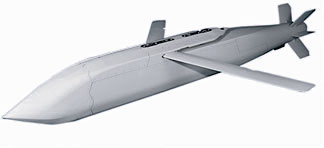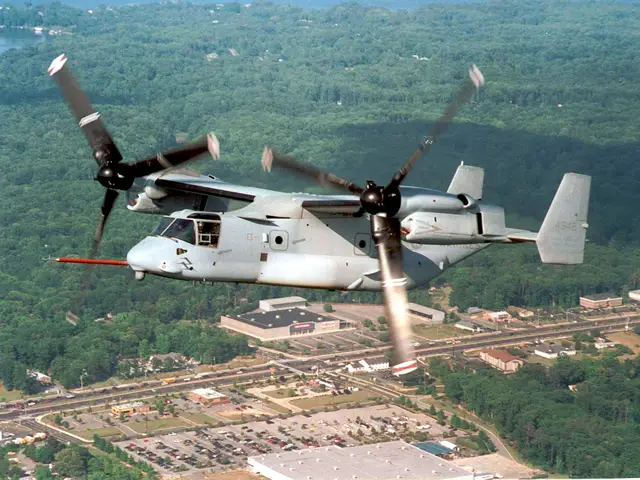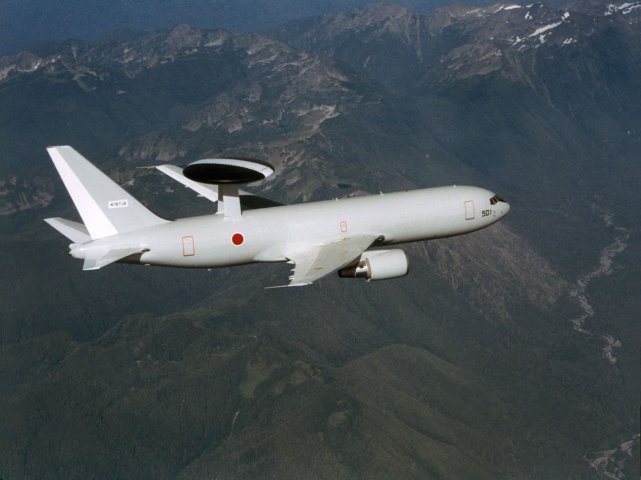The AIM-120 AMRAAM (Advanced Medium-Range Air-to-Air Missile) is a fire-and-forget air-to-air missile manufactured by Raytheon, and has replaced the AIM-7 Sparrow as the U.S. military's standard BVR (Beyond Visual Range) intercept missile. It has an all-weather, beyond-visual-range capability and is scheduled to be operational beyond 2000. AMRAAM is a supersonic, air launched, aerial intercept, guided missile employing active radar target tracking, proportional navigation guidance, and active Radio Frequency (RF) target detection.
Raytheon (Hughes) AIM-120 Advanced Medium-Range Air-to-Air Missile (AMRAAM), United States of America
The AIM-120 AMRAAM (Advanced Medium-Range Air-to-Air Missile) is a fire-and-forget air-to-air missile manufactured by Raytheon, and has replaced the AIM-7 Sparrow as the U.S. military's standard BVR (Beyond Visual Range) intercept missile. It has an all-weather, beyond-visual-range capability and is scheduled to be operational beyond 2000. AMRAAM is a supersonic, air launched, aerial intercept, guided missile employing active radar target tracking, proportional navigation guidance, and active Radio Frequency (RF) target detection.
Here goes the code of the element you want to show
Lockheed Martin AGM-158 JASSM (Joint Air-to-Surface Standoff Missile), United States of America
The AGM-158 JASSM (Joint Air-to-Surface Standoff Missile) is a long-range, conventional, air-to-ground, precision standoff missile developed and produced by Lockheed Martin. This conventional missile was designed primarily for the US Air Force (USAF). Designed to destroy high-value, well-defended, fixed and relocatable targets, JASSM’s significant standoff range keeps aircrews well out of danger from hostile air defense systems.
Raytheon (Texas Instruments) AGM-88 High-speed Anti-Radiation Missile, United States of America
The AGM-88 High-speed Anti-Radiation Missile (HARM) is a tactical, air-to-surface missile designed to home in on electronic transmissions coming from surface-to-air radar systems. It was originally developed by Texas Instruments as a replacement for the AGM-45 Shrike and AGM-78 Standard ARM system. Production was later taken over by Raytheon Corporation when it purchased the defense production business of Texas Instruments.
The AGM-88 can detect, attack and destroy a radar antenna or transmitter with minimal aircrew input.
AGM-154 Joint Standoff Weapon (JSOW), United States of America
The AGM-154 JSOW (Joint Standoff Weapon) is a modular precision-attack glide bomb, which is included in this missile directory because of its guided missile designation manufactured by Raytheon. The AGM-154 is the product of a joint venture between the United States Navy and Air Force to deploy a standardized medium range precision guided weapon, especially for engagement of defended targets from outside the range of standard anti-aircraft defenses, thereby increasing aircraft survivability and minimizing friendly losses.
PZL W-3 Sokół Multi-Purpose Combat Helicopter, Poland
The design of the PZL W-3 Sokol combat helicopter was based on the inputs from the Polish Air Brigade's combat operations in Iraq.
Mil Mi-24 Hind Assault and Attack Helicopter,Russia
The Mil Mi-24 (Russian: Миль Ми-24; NATO reporting name: Hind) is a large helicopter gunship, attack helicopter and low-capacity troop transport with room for eight passengers. It is produced by Mil Moscow Helicopter Plant and has been operated since 1972 by the Soviet Air Force and its successors, along with more than 30 other nations.
Soviet pilots called the Mi-24 the "flying tank" (летающий танк; letayushchiy tank), a term used historically with the famous World War II Soviet Il-2 Shturmovik armored ground attack aircraft.
Bell Boeing V-22 Osprey Tilt-Rotor Aircraft, United States of America
The Bell Boeing V-22 Osprey is an American multi-mission, tiltrotor military aircraft with both a vertical takeoff and landing (VTOL), and short takeoff and landing (STOL) capability. It is designed to combine the functionality of a conventional helicopter with the long-range, high-speed cruise performance of a turboprop aircraft.
The V-22 Osprey developed by Boeing and Bell Helicopters. Boeing is responsible for the fuselage, landing gear, avionics, electrical and hydraulic systems, performance and flying qualities.
Boeing 767 AWACS Airborne Warning and Control Aircraft, Japan
The Boeing 767 is an Airborne Warning and Control System (AWACS) aircraft. It was designed in response to the Japan Air Self-Defense Force's requirements, and is essentially the Boeing E-3 Sentry's surveillance radar and air control system installed on a Boeing 767-200. The Boeing 767 AWACS airborne warning and control system has been selected by Japan to carry out airborne surveillance and command and control (C2) operations for tactical and air defence forces.
Subscribe to:
Posts (Atom)

.jpg)





